Creative Coding & More 1
Elective Math Credit
You can access the course materials by clicking on the course name above, logging in as a guest and entering the password "parent".
Course Description:
This semester length course introduces you to the basics of mobile computing, coding, and design. Topics covered include creative app design, user interfaces, components, events, internet connections, and other introductory coding basics. We will use MIT App Inventor (a block-based language) to learn to code through tutorials and extend to problem solving and "Apps for Good" social issues. Social impacts of computing (Computational Action) will be woven through the entire course. You should expect a collaborative, creative, active, project-based learning environment where "learning by doing" is the norm.
Benefits of taking this course:
1/2 high school (math elective) credit is awarded for successful completion of the course. More importantly, coding knowledge leads to better understanding of the modern world, tasks/projects are fun and satisfying and creativity, problem solving, persistence, and resilience are improved, and collaboration and communication skills are enhanced. All these skills that you will acquire are in high demand and provide a competitive advantage in jobs. This course is a "learning by doing" class. Although there will be some days of discussion,background research, or planning/designing, mostof the time will be spent working on tasks and projects. Sometimes called "project based learning", courses like this center on application of concepts rather than learning in a vacuum. It's the problems we try to solve that drive the learning. It's how this all fits into our world that draws us to learn more so we can impact our world.
Who should take this course:
You must have completed Math 8 with a "C-" or better prior to taking this course. You do not have to be a top rate mathematician. The course does not depend on high level mathematics. The atmosphere of this class will be more relaxed and investigative. You will be engaged in collaboratively researching topics, discussing designs and ways to solve problems, and creating programs and other computing products. There will be few written tests as the course will be project based. Assessing projects will be done through clear rubrics and a variety of products are expected. There will be many opportunities for creative expression. So, if you prefer a lab-based, student-centered class with an emphasis on real world connections, this class is for you.
More about this course:
The ultimate goal of this course is to learn how to solve problems through creating mobile apps. Learning will occur in response to needs... ways to make life better for a local community or group of people with common needs. Creating change, providing new ways to see the world, creative expression, and design thinking will be our guiding themes. Groups of students will work collaboratively to develop their own style of design thinking... ways to analyze problems,break them into smaller chunks and then build the pieces back into a final product. There is no one way to do this and every group will develop their own style. Criteria and guidance will be provided along the way. You can see more about the course in the video above.
Creative Coding & More 2
Elective Math Credit
You can access the course materials by clicking on the course name above, logging in as a guest and entering the password "parent".
Course Description:
This course switches attention from mobile apps in a block-based language to web-based app development in a text-based language (Python). This semester length course is based on the idea that learning about coding should be fun and engaging. The problems we solve are visually engaging, allow for multiple correct solutions, and provide visual cues when a solution goes awry. The end of each unit gives you the opportunity to combine the concepts of the unit into an app of your own design. You should expect a collaborative, creative, active, project-based learning environment where "learning by doing" is the norm. If you have prior experience in Python, you should talk to the teacher to ensure this is a good placement for you.
Benefits of taking this course:
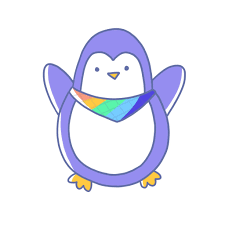 1/2 high school (math elective) credit
is awarded for successful completion
of the course. Coding and computational problem solving are fundamental skills for engaging the 21st-century marketplace of ideas and economies. More
importantly, coding knowledge leads
to better understanding of the
modern world, tasks/projects are fun
and satisfying and improve
creativity, problem solving,
persistence, and resilience are
improved, and collaboration and
communication skills are enhanced.
All these skills that you will
acquire are in high demand and
provide a competitive advantage in
jobs. This course is also a "learning by
doing" class. Although there will be
some days of discussion, background
research, or planning/designing,
most of the time will be spent
working on tasks and projects.
Sometimes called "project based
learning", courses like this center
on application of concepts rather
than learning in a vacuum. It's the
problems we try to solve that drive
the learning.
1/2 high school (math elective) credit
is awarded for successful completion
of the course. Coding and computational problem solving are fundamental skills for engaging the 21st-century marketplace of ideas and economies. More
importantly, coding knowledge leads
to better understanding of the
modern world, tasks/projects are fun
and satisfying and improve
creativity, problem solving,
persistence, and resilience are
improved, and collaboration and
communication skills are enhanced.
All these skills that you will
acquire are in high demand and
provide a competitive advantage in
jobs. This course is also a "learning by
doing" class. Although there will be
some days of discussion, background
research, or planning/designing,
most of the time will be spent
working on tasks and projects.
Sometimes called "project based
learning", courses like this center
on application of concepts rather
than learning in a vacuum. It's the
problems we try to solve that drive
the learning.
Who should take this course:
You must have completed Math 8 with a "C-" or better and successfully completed Creative Coding & More 1 prior to taking this course. This course does not depend on high level mathematics, but does go beyond the first semester in complexity. Logical thinking and attention to detail will be more important this semester. The atmosphere of this class will be continue to be relaxed and investigative. You will be engaged in collaboratively discussing designs and ways to solve problems, and creating programs and other computing products. There will be a quiz at the end of each unit, but quizzes will play a small role in the overall grade. Assessing projects will be done through clear rubrics and a variety of products are expected. There will be many opportunities for creative expression. So, if you prefer a lab-based, student-centered class with an emphasis on creative expression, this class is for you.
More about this course:
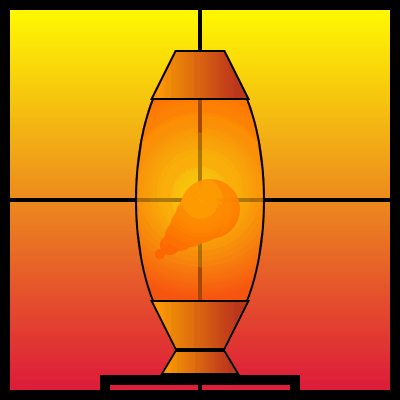 There are 12 Units to the course
altogether, however, the course is split up into two parts, CS1a (units 1-7) and CS1b (units 8-12).
This way, we can work at different
paces with those who wish to move
faster being able to do so. We believe the best way to learn this material is to do it, so each unit provides content for the topic to be investigated, a worked problem(s) to illustrate and let
you explore the topic, a set of exercises to hone
your mastery of the topic, some end-of-unit exercises that require
you to use and pull together all the topics found in that Unit, and a creative task that lets
you further explore the topics in the Unit in a manner driven by
your own interests.
This course provides its own browser-based Integrated Development Environment (IDE) that
you will use to create and run your
web-based apps. The environment
contains an editor and compiler, a custom graphics package, and an autograder that is capable of grading not only textual problems and solutions but also a broad range of graphics problems and solutions.
Most of the time, it tells you were
your mistakes are so you can fix
them. You will work more
independently or with classmates in
this class with the teacher helping
as needed.
There are 12 Units to the course
altogether, however, the course is split up into two parts, CS1a (units 1-7) and CS1b (units 8-12).
This way, we can work at different
paces with those who wish to move
faster being able to do so. We believe the best way to learn this material is to do it, so each unit provides content for the topic to be investigated, a worked problem(s) to illustrate and let
you explore the topic, a set of exercises to hone
your mastery of the topic, some end-of-unit exercises that require
you to use and pull together all the topics found in that Unit, and a creative task that lets
you further explore the topics in the Unit in a manner driven by
your own interests.
This course provides its own browser-based Integrated Development Environment (IDE) that
you will use to create and run your
web-based apps. The environment
contains an editor and compiler, a custom graphics package, and an autograder that is capable of grading not only textual problems and solutions but also a broad range of graphics problems and solutions.
Most of the time, it tells you were
your mistakes are so you can fix
them. You will work more
independently or with classmates in
this class with the teacher helping
as needed.
Creative Writing
Elective English Credit
You can access the course materials by clicking on the course name above.
Course Description:
This course is designed for students who have an interest in creative writing, whether it be poetry, fiction, or drama. The course guides students in the development of their own unique style and voice, while at the same time focusing on writing polished pieces of work to be shared with their peers and on occasion with the larger school community. This course includes a study of published poets, fiction writers, and dramatists, who will serve as role models to inspire students and to provide examples of what great writing looks like. The course also frequently utilizes peer evaluation, as the course will be structured as a workshop, encouraging students to help each other revise and edit their work.
Benefits of taking this course:
 Taking this
semester-length course will help you find your own voice and improve your writing skills, both in terms of writing conventions and creativity. You'll also get an opportunity to share your work with your peers and to receive constructive criticism, with an eye towards reaching your full potential as a writer. Finally, self-expression is incredibly important as an outlet to work through the myriad of thoughts and feelings you may have swirling around in your head. You'll have plenty of opportunities to express yourself in this class. Plus, it's fun!
And...this class counts
towards graduation as one semester
(.5 credits) of English.
Taking this
semester-length course will help you find your own voice and improve your writing skills, both in terms of writing conventions and creativity. You'll also get an opportunity to share your work with your peers and to receive constructive criticism, with an eye towards reaching your full potential as a writer. Finally, self-expression is incredibly important as an outlet to work through the myriad of thoughts and feelings you may have swirling around in your head. You'll have plenty of opportunities to express yourself in this class. Plus, it's fun!
And...this class counts
towards graduation as one semester
(.5 credits) of English.
Who should take this course:
This course is open to students of all grade levels. Anyone who has a desire to write creatively and to improve their writing skills in ways that go beyond writing an essay would enjoy this course. Ask your current English teacher if this course may be right for you, or stop by Room 260 to speak to Ms. Dodd.
More about this course:
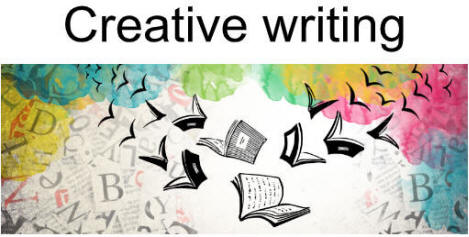
This course is designed to cover multiple genres of creative writing, including poetry, short story, and plays. Students will get feedback throughout the semester, both from their teacher and from their peers, with the goal of reaching their full potential as writers. Ultimately, at the end of the semester, students will create a writing portfolio that showcases their best work. See this website for examples:
Creative Writing.
AP Computer Science Principles
Elective Math Credit
You can access the course materials by clicking on the course name above, logging in as a guest and entering the password "parent".
Course Description:
AP Computer Science Principles is designed to introduce the central ideas of computer science, to instill ideas and practices of computational thinking, and to have students engage in activities that show how computing changes the world. The course emphasizes three key themes: creativity, the use of technology as a means for solving computational problems and exploring creative endeavor, and a focus on people and society, not just on machines and systems. In addition to its AP designation, this course is offered at NOHS as a College Credit Plus course through Cleveland State University and an appropriate level of work should be expected. Students are expected to take the AP exam in the spring.
Benefits of taking this course:
1-Year high school (math elective) credit on the AP weighted scale is awarded for successful completion of the course. CCP credit for Invitation to Computing, CIS 151, can be earned through Cleveland State University and AP credit can be earned with a passing score on the AP Exam in the Spring.
Who should take this course:
You must have earned a “B” or higher in both Integrated Math 1 and English 9 prior to taking this course. You do not have to be a top rate mathematician. The course does not depend on high level mathematics. You only need a good understanding of Integrated Math I. Rather, you are asked to explore and explain concepts with the help of hands-on investigations where technology lowers the drudgery of computation. At NOHS, this is a full year course in a small class so you’ll have more opportunities to explore, ask questions, be creative, and apply the concepts to your own interests. So, if you prefer a lab-based, student-centered class with an emphasis on real world connections, this class is for you.
More about this course:
AP Computer Science Principles offers a multidisciplinary approach to learning the underlying principles of computation. The course will introduce you to creative aspects of programming, using abstractions and algorithms, working with large data sets, understanding the Internet and issues of cybersecurity, and impacts of computing that affect different populations. In a nutshell, AP Computer Science Principles will give you the opportunity to use current technologies to solve problems and create meaningful computational artifacts. You can see more about the course in the video above.
AP Computer Science A
Elective Math Credit
You can access the course materials by clicking on the course name above, logging in as a guest and entering the password "parent".
Course Description:
Computer Science A is the equivalent to a first semester, college level course in computer science. The course introduces students to computer science with fundamental topics that include problem solving, design strategies and methodologies, organization of data (data structures), approaches to processing data (algorithms), analysis of potential solutions, and the ethical and social implications of computing. The course emphasizes both object- oriented and imperative problem solving and design using Java language. These techniques represent proven approaches for developing solutions that can scale up from small, simple problems to large, complex problems. The AP Computer Science A course curriculum is compatible with many CS1 courses in colleges and universities. Students are expected to take the AP exam in the spring. As an AP level course, students should expect to work at a college level.
Benefits of taking this course:
You will earn 1 high school (math elective) credit on the AP weighted scale for successful completion of the course. AP credit can be earned with a passing score on the AP Exam in the Spring. This is an excellent course for preparing for college courses requiring problem solving, analysis, design strategies, logical thinking, and creativity. The benefit of taking the course here at NOHSis that it’s a full year course in a small class. So, you’ll have more opportunities to explore, ask questions, and create your own applications and solutions. Additionally, we explore using computer science to solve social issues and will spend some time applying our concepts to creating something really useful.
Who should take this course:
You must have passed Integrated Math 2 with a "C" or better prior to taking this course. This course is designed for students who have a strong interest in developing computer-based solutions to problems in many fields. You will need to think hard about the concepts and apply them to solve problems. Although most work is done in class, some reading and study is necessary outside class. The course is for students who prefer a lab-based, student-centered class with an emphasis on developing creative solutions to problems. You do not have to be a top rate mathematician and will only need some concepts from Integrated Math 2. Instead, you are asked to solve problems with logic and teach the computer to do the work efficiently.
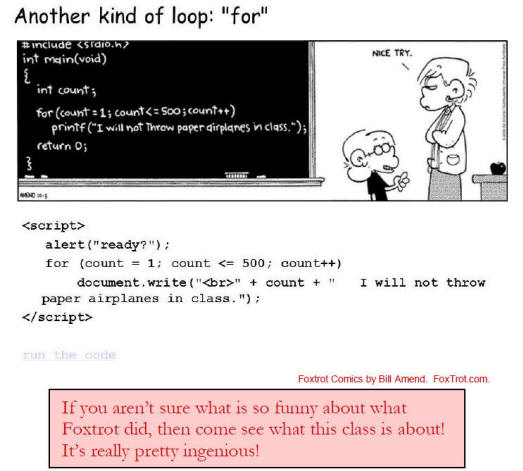
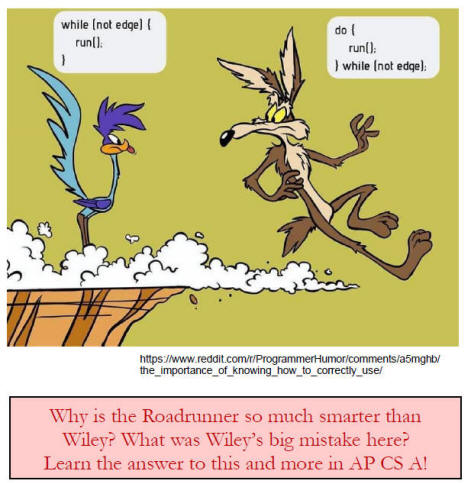
More about this course:
 Computer
Science is an exciting, challenging,
and growing field that impacts the
world and everyday life in countless
ways. Computer scientists are
involved in creating technology and
systems that are used in a wide
range of industries, including
medicine, communications,
entertainment, manufacturing,
business, and science. CS research
pushes the state-of-the-art in
computing theory and practice, and
it leads to new technologies that
change the world, such as artificial
intelligence, machine learning,
cybersecurity, social media, and
much more
Computer
Science is an exciting, challenging,
and growing field that impacts the
world and everyday life in countless
ways. Computer scientists are
involved in creating technology and
systems that are used in a wide
range of industries, including
medicine, communications,
entertainment, manufacturing,
business, and science. CS research
pushes the state-of-the-art in
computing theory and practice, and
it leads to new technologies that
change the world, such as artificial
intelligence, machine learning,
cybersecurity, social media, and
much more
AP Statistics
Elective Math Credit
You can access the course materials by clicking on the course name above, logging in as a guest and entering the password "parent".
Course Description:
AP Statistics introduces you to the major concepts and tools used in collecting, analyzing, and drawing conclusions from data. You will be exposed to four broad themes: (1) Exploring data: (observing patterns and departures from patterns); (2) Planning a study (deciding what and how to measure): (3) Anticipating patterns (producing models using probability and simulation); (4) Statistical inference (confirming models). You will be expected to take the AP exam in the spring and having a TI-84, TI –84 +, or TI-Nspire calculator is necessary for success in the course and on the AP exam. As a technology based course, the class is taught in a computer lab. As an AP level course, you should expect to have homework.
Benefits of taking this course:
You will earn 1 high school (math elective) credit on the AP weighted scale for successful completion of the course. AP credit can be earned with a passing score on the AP Exam in the Spring. Statistics is the most widely applicable branch of mathematics. It is used by more people than any other kind of advanced math. The benefit of taking the course here at NOHS is that it’s a full year course in a small class so you’ll have more opportunities to explore, ask questions, and do your own true research studies. Additionally, we explore using statistics to solve social issues and will spend some time applying our concepts to doing something really useful.
Who should take this course:
You must have passed Integrated Math 2 with a "B" or better prior to taking this course. This course will enable you to learn how to collect, organize, analyze, and interpret data. You will need to think hard about the concepts and apply them to solve problems. You’ll be assigned homework problems and/or reading most days (with labs and activities on other days). You will need to think hard about the concepts. The course is for students who prefer a lab-based, student-centered class with an emphasis on real world connections. You do not have to be a top rate mathematician and will only need some concepts from Integrated Math 2. Instead, you are asked to explore and explain concepts with the help of hands-on investigations where technology lowers the drudgery of computation.
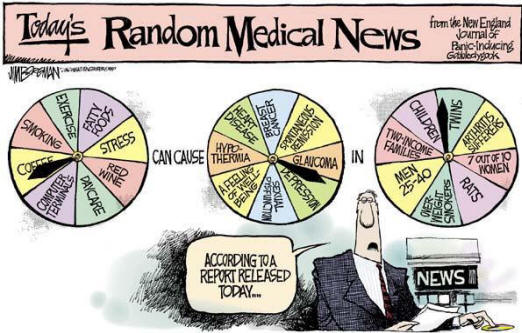
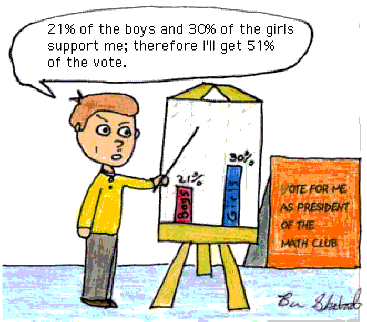
More about this course:
 We
live in an information society; raw
data, graphs, charts, rates,
percentages, probabilities,
averages, forecasts, and trend lines
are an inescapable part of our
everyday lives. It is hard to avoid
news items in which recent studies
make claims about the effect of some
food product on people’s health.
Studies in which people who ate
oatmeal had lower cholesterol than
those who did not might suggest that
those with high cholesterol would be
wise to eat oatmeal. In AP
Statistics, we learn to examine the
details of studies. We might
question if oatmeal really lowered
cholesterol or did the subjects just
eat oatmeal instead of their normal
breakfast of two fried eggs? Perhaps
eating cornflakes would have had the
same effect. Statistics is used by
most companies. Business decisions
are made based on market research.
Advertising executives want to know
whether a new ad campaign
significantly increases sales.
Doctors must know the reliability of
medicine and treatments. Products
such as pharmaceuticals require
significant evidence of
effectiveness and safety.
Politicians rely on data from polls
and public opinion. Courts inquire
about statistical significance in
hearing class action discrimination
cases. Any company that expects to
obtain a government contract must
have strong evidence of a
statistical quality control program.
Statistical literacy is important as
we are all consumers of goods and
services and need to make
intelligent choices. AP Statistics
provides the opportunity for you to
learn how to make good decisions
with data.
We
live in an information society; raw
data, graphs, charts, rates,
percentages, probabilities,
averages, forecasts, and trend lines
are an inescapable part of our
everyday lives. It is hard to avoid
news items in which recent studies
make claims about the effect of some
food product on people’s health.
Studies in which people who ate
oatmeal had lower cholesterol than
those who did not might suggest that
those with high cholesterol would be
wise to eat oatmeal. In AP
Statistics, we learn to examine the
details of studies. We might
question if oatmeal really lowered
cholesterol or did the subjects just
eat oatmeal instead of their normal
breakfast of two fried eggs? Perhaps
eating cornflakes would have had the
same effect. Statistics is used by
most companies. Business decisions
are made based on market research.
Advertising executives want to know
whether a new ad campaign
significantly increases sales.
Doctors must know the reliability of
medicine and treatments. Products
such as pharmaceuticals require
significant evidence of
effectiveness and safety.
Politicians rely on data from polls
and public opinion. Courts inquire
about statistical significance in
hearing class action discrimination
cases. Any company that expects to
obtain a government contract must
have strong evidence of a
statistical quality control program.
Statistical literacy is important as
we are all consumers of goods and
services and need to make
intelligent choices. AP Statistics
provides the opportunity for you to
learn how to make good decisions
with data.